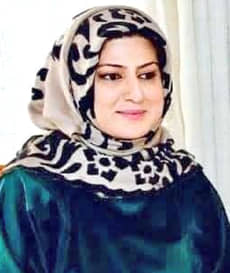Empowering Women in India and the Reservation Bill
By Dr Shenaz Ganai

“A woman is half the world. She is also a paragon of beauty as well as a symbol humility. She also stands out as a figure of strength and forbearance. In fact, the richness of her being cannot be ever exhausted in words.”
In the grand circle of India’s progress, the empowerment of women stands as a pivotal thread, intricately woven with history, culture, and aspirations. While we celebrate significant strides in recent years, it is imperative to recognize the persistent challenges that demand our attention and resolute action. As a dedicated advocate for the cause, I am compelled to shed light on the complexities of women’s empowerment in India and chart a path towards a brighter future. The policy of women’s empowerment is incorporated into the constitution of India which became effective in the year 1950. Article 14 ensures the right to equality for women; Article 15(1) prohibits gender discrimination; Article 15(3) empowers the state to take affirmative steps in favour of women, to name a few. Women empowerment in India is dependent up to a great extent on numerous different variables that encompass geographical setting (urban/rural), social status (caste and class), educational status, and age factor. Actions on the women empowerment exist at the state, local (panchayat), and national levels.
One cannot overstate the importance of education and employment in the journey towards women’s empowerment. Education, as the beacon of knowledge, empowers women to harness their potential, equipping them with the tools to navigate a rapidly changing world. It is heartening to see more Indian women embracing education and stepping into the workforce. However, this momentum must be sustained and amplified. The government’s commitment to investing in education and employment opportunities for women is non-negotiable. By doing so, we enable women to cultivate their skills and knowledge, and crucially, achieve economic independence. It is a collective responsibility to ensure that every girl in India has access to quality education and the chance to pursue her dreams.
Despite the urban progress, rural women often find themselves on the fringes of empowerment. This injustice must be redressed. Our focus must extend to the heartland, where rural women, frequently the most marginalized, yearn for opportunities. We must empower them through education, create economic avenues, and ensure access to essential services. It’s time to bridge the urban-rural divide and create a more inclusive India. Deep-rooted social and cultural norms perpetuate gender inequality. Government must muster the courage to challenge these norms and rewrite the narrative. Education and awareness programs are powerful tools in dismantling the stereotypes that restrict women’s progress. Moreover, promoting female role models across various sectors can inspire future generations to reach for the stars, just as the women scientists at ISRO did during the Chandrayaan-3 mission.
Pertinently, the scourge of violence against women must be confronted head-on. We need a multi-pronged approach, encompassing prevention, stringent punishment for perpetrators, and unwavering support for victims. Creating a society where women can live free from fear and violence is our collective responsibility.
The Women’s Reservation Bill, is a defining moment in India’s journey toward gender equality. This legislation, by reserving one-third of seats in the Lok Sabha and state legislative assemblies for women, will amplify their voices in decision-making processes. It is a significant step forward, and we must rally behind it. Women’s empowerment is not just a noble aspiration; it is a strategic imperative for India’s development. Our progress as a nation hinges on the full participation of women in every sphere of life. The challenges may be formidable, but our resolve must be stronger. India already reserves one-third of seats for women in Panchayati Raj Institutions at the village level and one-third of the offices of the chairperson at all levels of the Panchayati Raj Institutions, and in urban local bodies, respectively.
Globally, women currently occupy only 26.7% of parliamentary seats and 35.5% of local government positions. The reserving of 33% seats for women in India will leapfrog India into one of 64 countries around the world who have reserved seats for women in their national Parliaments. Typically, achieving a critical mass of 33 per cent representation by women in Parliament is known to yield positive outcomes for women’s empowerment. With implementation of such reservations will eventually lead to achieving 50 per cent representation of women in Parliaments across the globe.
My heart is happy to the core to see the remarkable achievements of women in fields ranging from space exploration to politics. They exemplify the indomitable spirit of Indian women. It is my fervent hope that, as a nation, we will stand united to overcome the challenges and usher in an era where every woman can fulfill her potential. Together, we can create a more just and equitable India, where no woman’s dreams are limited by the gender she was born with. It is important that formulating and execution of a concrete policy framework, dispersing civic awareness, and education concerning the empowerment of women can usher to accomplishing the desired missions in eradicating the plight of women in the society of India. The realm of women empowerment in India is limited to granting balanced rights to women. Pertinent to mention that country’s bold and path breaking step viz a viz Women’s Reservation Bill is a clear message to the whole world that the path to gender equality is also attainable.
(The author is former Member of Legislative Council Jammu and Kashmir and can be reached at [email protected]).
